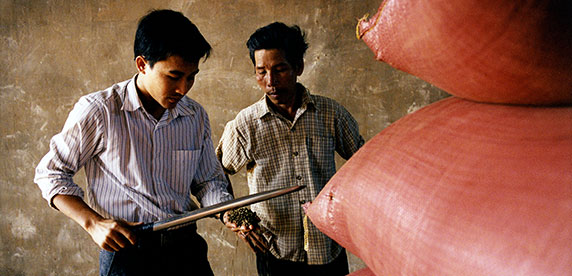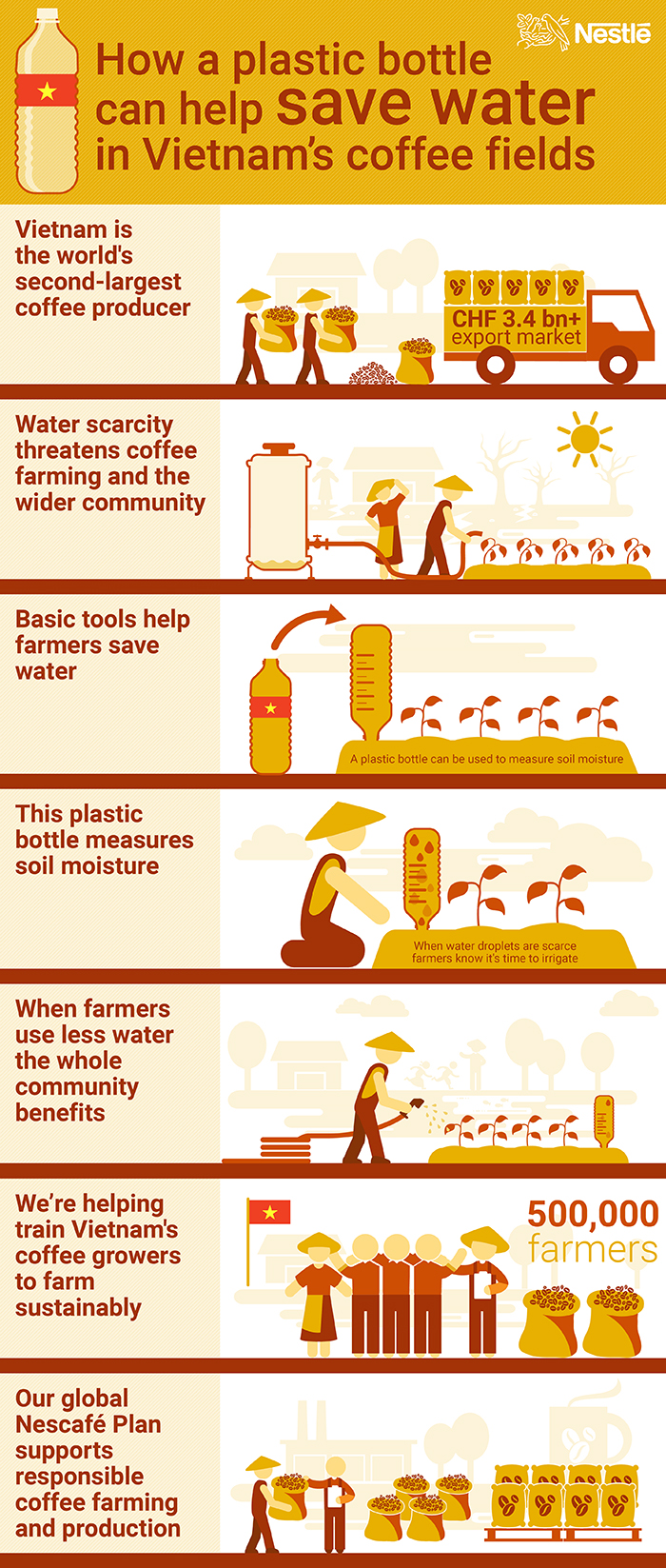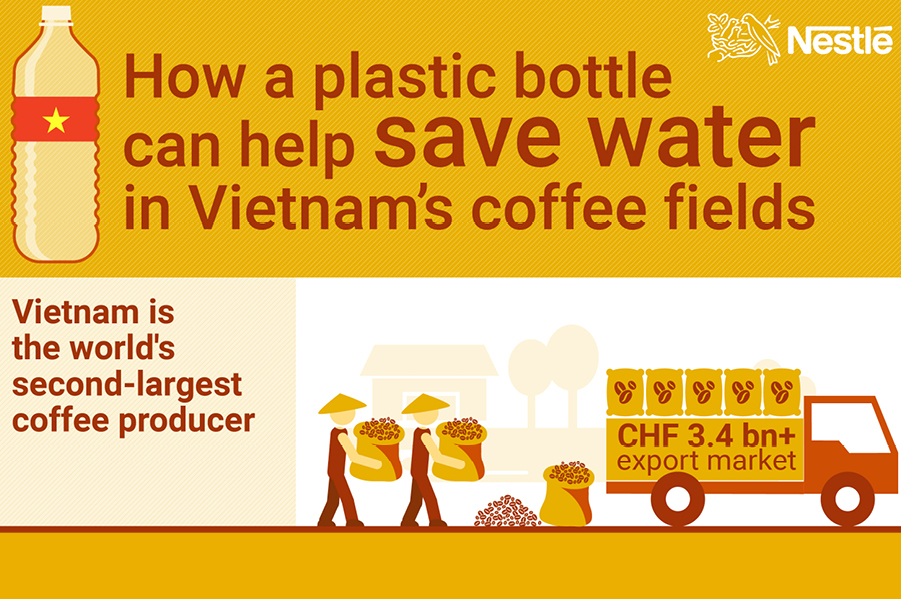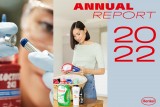Vietnam is the world’s second-largest coffee producer and 2.6 million people rely on the sector for their livelihood. Most of the nation’s coffee is grown in the Central Highlands, where agriculture in all its forms accounts for around 96 percent of the region’s water usage.
Climate change and overuse of water in agriculture means that water scarcity poses a growing threat to farmers, households and industry. A study co-funded by Nestlé estimated that, on average, coffee farmers use 60 percent more water than they need to during the dry season that runs from November to April, across the three to four necessary irrigation rounds.
Water scarcity carries environmental and economic costs
Beyond the environmental cost this brings, and the risk water scarcity poses to Vietnam’s coffee industry, farmers also face financial and labour costs. They don’t pay for the water they pump from wells, but must buy petrol to run the pumps, and then spend unnecessary time watering their fields.
Pham Phu Ngoc, the local head of Nestlé’s Agri-Service team, explains that one way to tackle this large-scale water problem quickly is by using low-cost tools that farmers find easy to understand, which they can show their neighbours how to use.

“Coffee in Vietnam grows on smallholdings of two to three acres, so large-scale management techniques are hard to implement, but innovative tools inspired by the coffee farmers themselves, show real potential,” he says.
It’s a concept that Ngoc has helped disseminate among Nestlé’s almost 20,000-strong ‘Farmer Connect’ network in the country, which supplies the company with coffee directly.
Simple, scalable tools gain ground in Vietnam
By inserting a plastic bottle upside-down in the soil and observing condensation levels in the bottle, the coffee farmer has an instrument to measure soil water content. When water droplets become scarce, he knows it is time for the first dry season irrigation.
The ingenuity doesn’t end there. After this first irrigation, the farmer uses an empty condensed milk can to show him how much rainwater his trees are receiving – this helps him adjust the amount of water he uses to irrigate throughout the rest of the dry season. For example, if a standard milk can is one-sixth full of rain water, he knows his trees nearby have received around 100 litres of water.

“The bottle and the can work,” Ngoc says. “It’s more effective than using more complicated tools that could be too scientific for the farmers to master.”
Vietnam’s coffee farmers traditionally used 700-1,000 litres of water per tree for each watering, he explains, but now achieve the same coffee yield using only 300-400 litres – thus, they effect savings of more than 50 percent in many cases.
Grassroots approach suits Vietnam’s coffee smallholders
While farmers in more developed countries may employ more sophisticated tactics to reduce water use, grassroots activities and education are proving effective in rural Vietnam. The milk can and plastic bottle are good examples of straightforward tools with significant impacts.
Nestlé promotes more comprehensive guidelines on water conservation to its Farmer Connect network in Vietnam, through its Nescafé Better Farming Practices developed with the NGO Rainforest Alliance, which form part of the global Nescafé Plan

And working with the Swiss Agency for Development and Cooperation (SDC), the company is also helping to teach more of Vietnam’s coffee farmers beyond its network about good agricultural practices including water management.
“The bottle and the can are simple tools to gauge soil moisture content, which tell farmers when it’s the best time to irrigate,” says Carlo Galli, Nestlé’s Technical Manager, Water Resources at the company’s head office in Switzerland. “This Vietnam case is not about high tech, it’s mainly about common sense and doing the simple things.”

source: nestle.com












